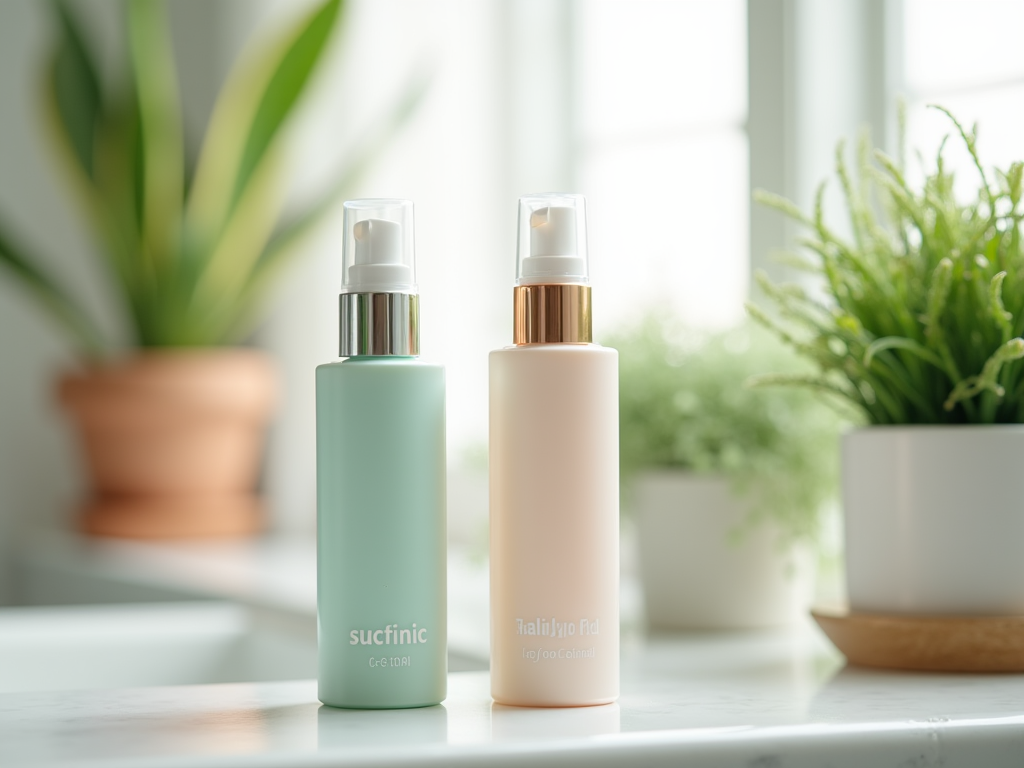Acne treatments have evolved significantly over the years, with countless products flooding the market, each claiming miraculous results. For quite some time, salicylic acid has held the throne as the go-to choice for those battling breakouts. However, a new challenger has emerged, captivating the attention of both skincare enthusiasts and experts alike: succinic acid. This lesser-known ingredient is not just a trend; it’s a scientifically backed solution with powerful properties that can transform the way you approach acne treatment. Dive into the world of succinic acid and discover why it’s the fresh alternative that cosmetics enthusiasts should consider in their routines.
Unlike its more recognized counterpart, succinic acid brings a unique set of qualities to the table. Its natural origin and functional benefits make it a noteworthy preference for those who want to treat acne without the dryness and irritation that often accompany traditional treatments. As we navigate this article, we’ll unpack the science behind succinic acid, compare it with salicylic acid, and explore how it can be effectively integrated into your skincare regime.
Understanding Succinic Acid

Succinic acid is a dicarboxylic acid that naturally occurs in foods like fruits and in the metabolic processes of living organisms. Its rise in popularity within the skincare realm is attributed to its effective and gentle methods for combating acne. So, what makes succinic acid stand out among its peers? The answer lies in its unique characteristics and benefits, which we’ll explore next.
- Natural Origins: Succinic acid is derived from amber and is a natural byproduct of metabolism.
- Anti-inflammatory Properties: It significantly helps reduce skin inflammation, making it especially beneficial for acne-prone skin.
- Skin Barrier Support: Succinic acid aids in maintaining a healthy skin barrier, preventing moisture loss.
Comparing Salicylic Acid and Succinic Acid

Both salicylic acid and succinic acid are esteemed for their acne-fighting properties, yet they work differently within the skin. Familiarizing yourself with these differences can empower you in choosing the right ingredient for your specific skin needs. Let’s break it down further.
Mechanism of Action
| Ingredient | How It Works |
|---|---|
| Salicylic Acid | Penetrates pores and exfoliates dead skin cells, acting as a beta hydroxy acid. |
| Succinic Acid | Reduces excess sebum production and inflammation, enhancing the skin’s barrier health. |
Efficacy in Acne Treatment
Recent research has indicated that succinic acid can effectively diminish acne lesions while minimizing the typical drying effects associated with salicylic acid. Many users find succinic acid less harsh, as it integrates well with a variety of other skincare ingredients without causing irritation. This gentleness is particularly appealing for those with sensitive skin who want to avoid redness and flakiness often linked to traditional treatments.
Additional Benefits of Succinic Acid
Beyond its initial role in acne treatment, succinic acid contributes an array of additional skin benefits, enhancing its appeal in the realm of skincare. Here are a few reasons to consider this intriguing ingredient:
- Antioxidant Properties: By combating oxidative stress, succinic acid helps prevent premature aging and skin damage.
- Hydration Support: It aids in retaining moisture levels, providing a necessary counterbalance to the drying effects of acne treatments.
- Versatility: It is suitable for various skin types, making it a fantastic option for people with different needs.
Formulations and Usage
With the growth of the skincare industry, many brands are now incorporating succinic acid into their formulations. As it gains momentum, understanding how to integrate it into your skincare routine becomes essential for maximizing its benefits. The following guidance will help you seamlessly introduce this ingredient into your daily regimen.
To harness the powers of succinic acid effectively, consider the following product types:
- Cleansers: Seek out face washes that contain succinic acid to start your routine on a positive note.
- Serums: These often provide targeted treatment for problem areas by concentrating the ingredient.
- Spot Treatments: Look for these for an effective response to sudden breakouts.
Conclusion
As we continue to explore and challenge the skincare norms, succinic acid presents an exciting alternative to traditional acne treatments. Its multifaceted benefits offer a kinder approach to acne management, making it appealing not just for skincare novices but also for seasoned aficionados. While salicylic acid has long been a trusted ally, its ability to dry out the skin has led many to seek gentler options. Enter succinic acid—a solution that not only addresses acne but also considers the overall health of your skin. So, whether you’re struggling with consistent breakouts or simply seeking a refined routine, succinic acid deserves your attention.
Frequently Asked Questions
- What is succinic acid? Succinic acid is a naturally occurring dicarboxylic acid with anti-inflammatory properties, often used in skincare formulations for acne treatment.
- Can succinic acid replace salicylic acid? While it may not completely replace salicylic acid, succinic acid can be an effective alternative, offering different benefits for acne management.
- Is succinic acid suitable for all skin types? Yes, succinic acid is generally well-tolerated and can be beneficial for various skin types, including sensitive skin.
- How often should I use succinic acid? Begin with once a day and observe how your skin reacts; you can increase usage as needed.
- Are there any side effects of using succinic acid? Side effects are minimal, but as with any new ingredient, it’s best to patch-test before full application.



